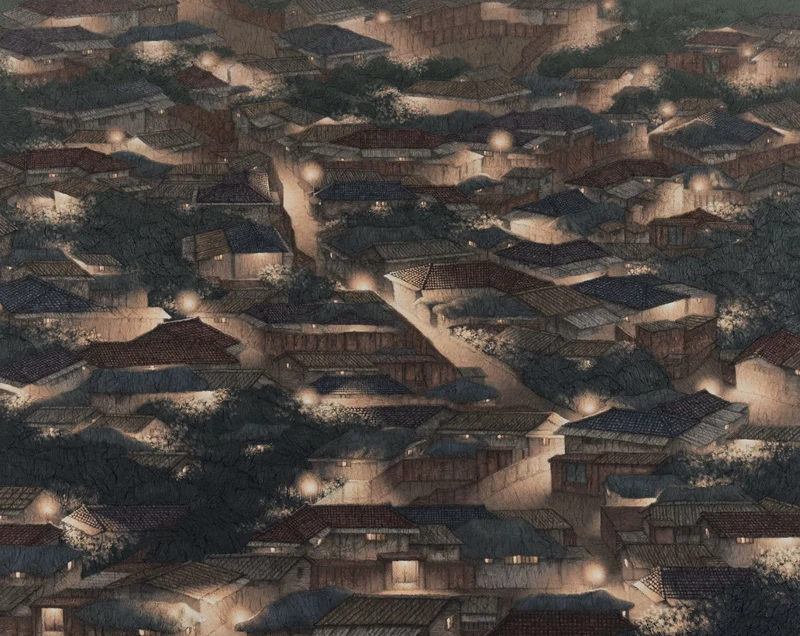Youngju Joung Way Back Home
14 Nov-20 Dec 2024


Joung Youngju’s paintings of Korean shanty towns are imbued with elements of the country’s history and society, down to their very fibre. The artist has developed her own technique of applying small pieces of the traditionally and locally made hanji paper onto the surface of the canvas to provide depth and texture to her subjects. The tradition of hanji paper, made from the bark of the indigenous paper mulberry tree, dates to around the third century; it absorbs sunlight, giving the material a warm hue. Due to its durability, water resistance, and permeability, hanji paper is used in traditional Korean houses—covering floors, walls, ceilings, windows, and doors—to help control temperatures and protect from the elements. There is a satisfying resonance in Joung’s use of the paper that makes up traditional Korean houses as a mode to depict them in her contemporary art. The artist has worked with hanji paper since 2007, starting her works with a pencil sketch and then adding small pieces of cut hanji paper, wrinkling them with a knife and layering them from the bottom up before applying acrylic paint. The crumpled effect reflects the materiality of the old, worn buildings and their vulnerability in the modern world.
Joung began painting Korea’s old buildings and village slums from memory and photographs in 2008. This choice of subject was both a reflection of her own upbringing in a shanty town but also an allegorical reflection on her life—she could relate to the small, traditional houses that were increasingly towered over by modern buildings. As Korean towns and cities are growing, these tightly packed, old houses are being demolished to make way for skyscrapers and condos. Joung’s early works used to include these formidable forms overpowering the older buildings, but over time she has made the slums the focal point to show their importance and peril. Titled Way Back Home, this exhibition is a personal one for Joung; the new works on show are more emotional in approach, reflecting on the artist’s process of reconciliation and reminiscence of her humble roots with her new life in Seoul.
The light that emanates from Joung’s paintings are central to the work. Capturing her landscapes at dusk and dawn allows for a focus on the soft , ethereal glow coming from the buildings themselves. The lights are representative of the individuals inside and are intended to denote the warmth of people and a sense of shared humanity in a world that is increasingly individualised. Joung methodically paints the same subject matter, obsessively focussing on the subtlety of the light and how it stretches endlessly into the distance. She quietly experiments with the illuminations—while earlier works used to show more light coming from within the houses, she now depicts more lights on the outside; the luminosity is becoming increasingly warm and mellow to represent her nostalgic fondness for her subject and a sense of hope for humanity. Some of the works in this exhibition, such as Spring series (2023) and Autumn in Village 1031 (2023), demonstrate Joung’s recent experimentations with colour and natural elements as a means to reflect the seasons and local nature, which is also under threat from relentless development. These green-, pink- and orange-hued works are being shown for the first time in this exhibition.
While inherently Korean in subject and material, Joung’s work speaks to transnational and transcendent themes. Every major city in the world is home to a ramshackle shanty town—whether it be the favelas of Rio de Janeiro, the gecekondu of Istanbul, or the slums of Detroit—and Joung’s indiscriminate collages of rooftops echo them all. Her focus on traditional buildings, landscapes and nature, eschewing the onslaught of modern development and infrastructure, speaks to a growing social desire globally to return to simpler times and lifestyles. Joung’s muted palette, glowing ambience. and meditative repetition respond to a heightened sense of nostalgia in our modern age.
— Aimee Dawson, art writer, editor and consultant